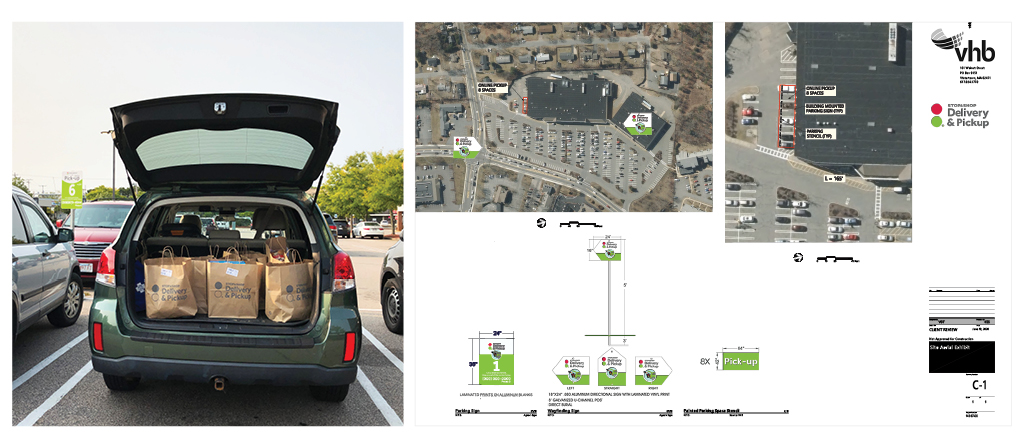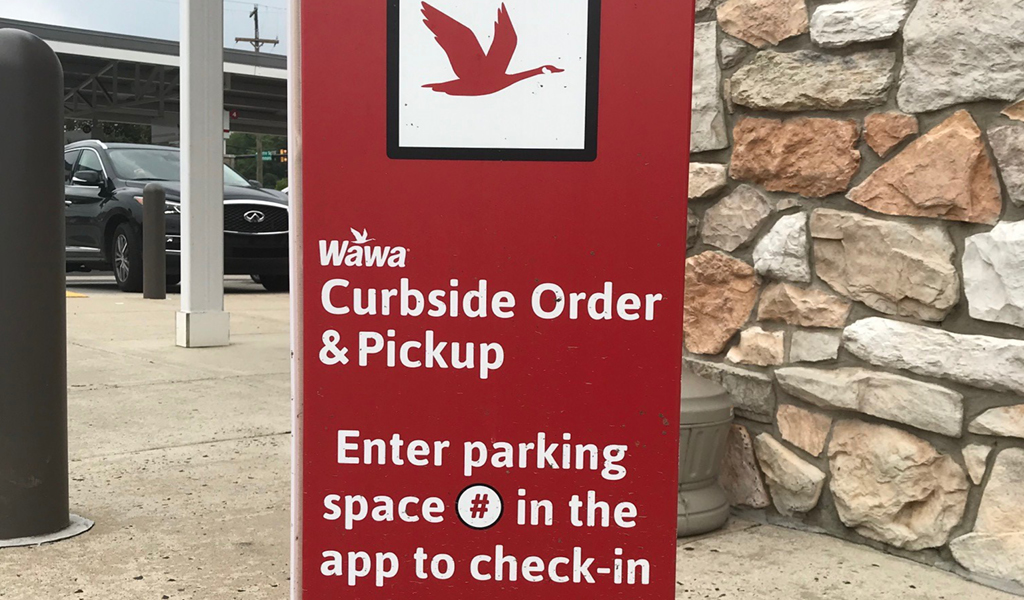Forward-thinking insights focused on a more sustainable tomorrow.
A Dynamic Retail Market: How the Acceleration in E-Commerce and Delivery Models Could Lead To Long-Term Structural Shifts
As e-commerce continues to evolve and become part of our culture, traditional brick-and-mortar retailers have focused on omnichannel strategies to reshape the consumer experience. Leading national retailers have invested in digital platforms to provide consumers with a variety of purchasing and delivery options. As a result, click-and-collect and curbside pickup programs have been added to the distribution mix, giving patrons control over how and when their transactions are processed and fulfilled. The click-and-collect delivery system enables consumers to purchase goods online and pick them up in-store or curbside, merging e-commerce solutions with brick-and-mortar infrastructure. Ultimately, these programs are designed to make the shopping journey more convenient as consumers choose a pickup window and retailers hand select, pack, and load merchandise into consumers’ cars.
The 2020 coronavirus outbreak accelerated e-commerce solutions across the nation. At the onset of the pandemic, many consumers turned to online shopping—advancing the adoption rate of contactless pickup and delivery services. As a result, the retail industry is undergoing rapid change and experiencing dynamic market shifts. In the short-term, businesses have been forced to pivot. Over the long-term, retailers are evaluating how technology and consumer preferences will alter distribution models and the interaction with their brands. Will click-and-collect and curbside pickup become part of the long-term structural shifts?

According to Brick Meets Click, shoppers have been buying food and essentials online in greater numbers and frequency.
Reshaping the Retail Experience
Consumers expect to shop whenever they want and access goods through a variety of channels, including e-commerce platforms that make shopping more convenient. The COVID-19 pandemic has led many retailers to rethink their business models and invest in short-term solutions, while evaluating the longer-term opportunities to reshape the retail experience. Click-and-collect programs and curbside pickup have played a critical role in keeping businesses operational and patrons safe.
Click-and-collect protocols vary from retailer to retailer. For example, in 2019, Ahold Delhaize rolled out their click-and-collect program and, by the end of the year, they had established 692 active click-and-collect points in the U.S., exceeding their initial goal of 600. The new service offers shoppers access to a wide selection of groceries and provides an added level of convenience, as online grocery orders are ready to be picked up within just a few hours.
Once customers arrive at the store, they park in a designated pickup area, call a phone number to signal their arrival, and a store associate delivers groceries to customers’ cars. Publix, Kroger’s, and other supermarket chains have also created digital platforms for their customers to schedule orders for delivery or utilize the in-store or curbside pickup service.

Click-and-collect has been a key accelerator behind the growth in e-commerce. Transactions have increased over the past couple of years, with big-box retailers announcing plans to increase investments in new technology to accommodate click-and-collect demand.
Retailers such as Target, Cosco, and Home Depot, as well as many restaurants, have also ramped up their curbside pickup operations to keep their businesses operational during COVID-19. More recently, retail center owners added pickup locations at regional malls and lifestyle centers to reach more consumers. Simon rolled out the Retail-To-Go Curbside Pickup Program and Brookfield launched a curbside program focused on contactless delivery, which is designed to create a safe and comfortable environment for both tenants and shoppers.
Click-and-Collect Benefits
- Reduced Cost—Customers can avoid shipping costs by picking up items at the store.
- Rapid Fulfillment—Online orders are often available for same day pick up.
- Convenience—Customers can leverage click-and-collect to expedite shopping for fast moving essential consumer goods.
- Assurance—Customers can choose to complete their purchases in-store, which gives them time to inspect products before committing to the purchase.
- Health & Safety—Customers with health considerations benefit from contactless delivery.
Investing in the Future
Curbside programs require an investment in infrastructure, both physical and digital, as well as workforce investments, to fulfill online orders. Curbside operations are labor-intensive and the rise in e-commerce has translated into thousands of new jobs as retailers are investing in labor to support program rollouts. Training budgets have also risen to confirm that fulfillment activity
is efficient. Additional curbside program considerations include:
- Store Design & Staging—Curbside programs trigger logistics plans and physical and operational enhancements to store locations. Grocery store planning departments need to develop operating systems and the delivery platform, allocating space for freezer and cold storage, heaters or hot boxes, as well as storage for dry goods. Cold storage space is critical to handling grocery orders that are picked two to four hours ahead of the delivery appointment. Staging areas are also important to handle the volume of curbside and delivery orders that are multiplying in response to social distancing mandates.
- Parking, Traffic & Safety—Retailers need to evaluate parking demands and efficient access and circulation schemes to the fulfillment area, considering such questions as:
- Where will customers park? Are parking spaces clearly visible and easy to access? Are there adequate spaces?
- Will parking spaces impact site access and circulation? What is the safest and most efficient way for customers to navigate to the spaces?
- Will goods be delivered to cars or will customers pick up in the store?
- Do customers have a designated pickup time?
- How long will it take to fulfill an order?
A careful review of a site’s access and circulation will enable retailers to designate a fulfillment area that enhances the customer experience. Frequently, retail stores allocate existing parking spaces to pickup operations and fulfillment areas are sited to promote ease of access and minimize potential pedestrian and traffic conflicts.
- Wayfinding & Visibility—Once a fulfillment area is designated on a plan, permits are secured to allow retailers to proceed and highlight pickup locations. Retailers are using a variety of markings, including pylons, wayfinding signs, banners, and striping to make certain that spaces are highly visible so that customers can easily locate the fulfillment area.
- Permitting—In some instances, curbside program rollouts may be easily managed by applying for a sign permit application. In other instances, curbside programs may require a local review by planning or zoning boards to confirm compliance with local regulations.
Curbside Management in the Urban Core
Curbside management is an important issue for cities, metropolitan area planning councils, and developers who are creating mixed-use districts. To balance the needs of all roadway users, important conversations are taking place around mobility, parking, and loading, as well as e-commerce and the growing demand for space allocated to curbside pickup. In the past, urban curbsides have been driven by land use, with parking and loading regulations supporting the adjoining buildings. Presently, there is recognition that the curb serves many important purposes throughout the day. E-commerce has intensified the demand for curb access and cities and retailers are dealing with a new set of challenges for curb access and congestion management. Cities are creating more time-based flexible zones which recognize and balance the space required for curbside pickup with the needs of the space required for transit, car parking, freight delivery, streateries, and private mobility operators such as Uber and Lyft. During the pandemic there was minimal competition for curbside spaces. It will be interesting to see how this evolves as traffic and parking will increase when workers return to their offices. How will cities respond?

How VHB Can Help
As e-commerce continues to accelerate, developers and retailers are working to transform the retail experience and distribution networks at a rapid pace. Retailers are adapting and investing in technology and delivery systems to reach savvy consumers who are seeking new ways to purchase goods and essentials. With a continued focus on consumer engagement and the technology to drive omnichannel strategies, retailers will experience continual reinvention. VHB can help translate an online experience into a physical setting, paving the way for a seamless consumer experience. Contact Kenneth Staffier today to start planning for tomorrow.



